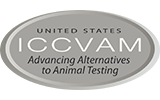Broadening applicability of defined approaches for identification of skin sensitizers
Skin sensitization testing is a regulatory requirement for the safety of pesticides in multiple countries. Globally harmonized test guidelines that include in chemico and in vitro methods reduce animal use, but no single assay is a complete replacement for animal tests. Defined approaches (DAs) that integrate data from multiple non-animal methods are internationally accepted, specifically via OECD Guideline 497. However, these DAs were evaluated with mono-constituent substances, which may limit their applicability to multi-constituent substances such as pesticides. An analysis by NIEHS scientists and collaborators evaluated rule-based DAs for hazard and/or potency categorization of skin sensitization for agrochemical formulations (Strickland et al. 2022). The data set for the analysis included 27 formulations, each tested using the direct peptide reactivity assay, the KeratinoSens™ assay, and the human cell line activation test. The KeratinoSens assay had the highest performance for predicting in vivo hazard outcomes and performed better than any of the DAs. The analysis demonstrates that non-animal test methods are useful for evaluating the skin sensitization potential of agrochemical formulations. Further investigation is necessary to determine whether DAs can outperform individual assays for predicting in vivo sensitization hazard of pesticide formulations in general.
In a separate study, NIEHS and EPA scientists and collaborators evaluated the use of DAs to evaluate sensitization potential of isothiazolinones. Isothiazolinones are used as preservatives in a range of consumer products but are known to cause skin sensitization and irritation. The skin sensitization potential of six isothiazolinones was evaluated using three internationally harmonized non-animal test methods: the direct peptide reactivity assay, KeratinoSens™, and the human cell line activation test. Results from these test methods were then applied to two versions of the Shiseido Artificial Neural Network defined approach. Hazard or potency predictions showed high concordance with those produced by reference animal test data with less variability. The application of in silico models to in chemico and in vitro skin sensitization data is a promising data integration procedure for DAs to support hazard and potency classification and quantitative risk assessment.



